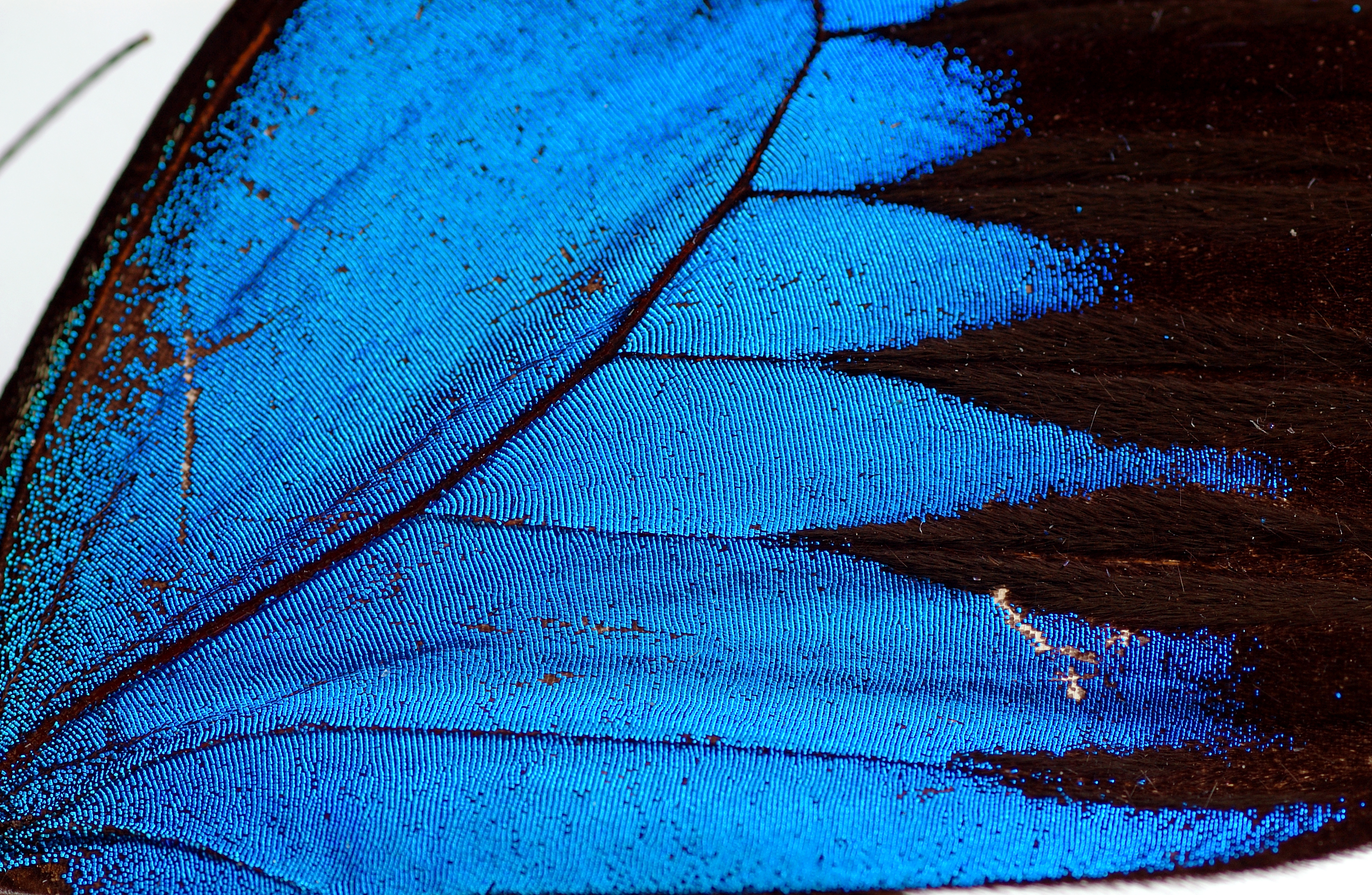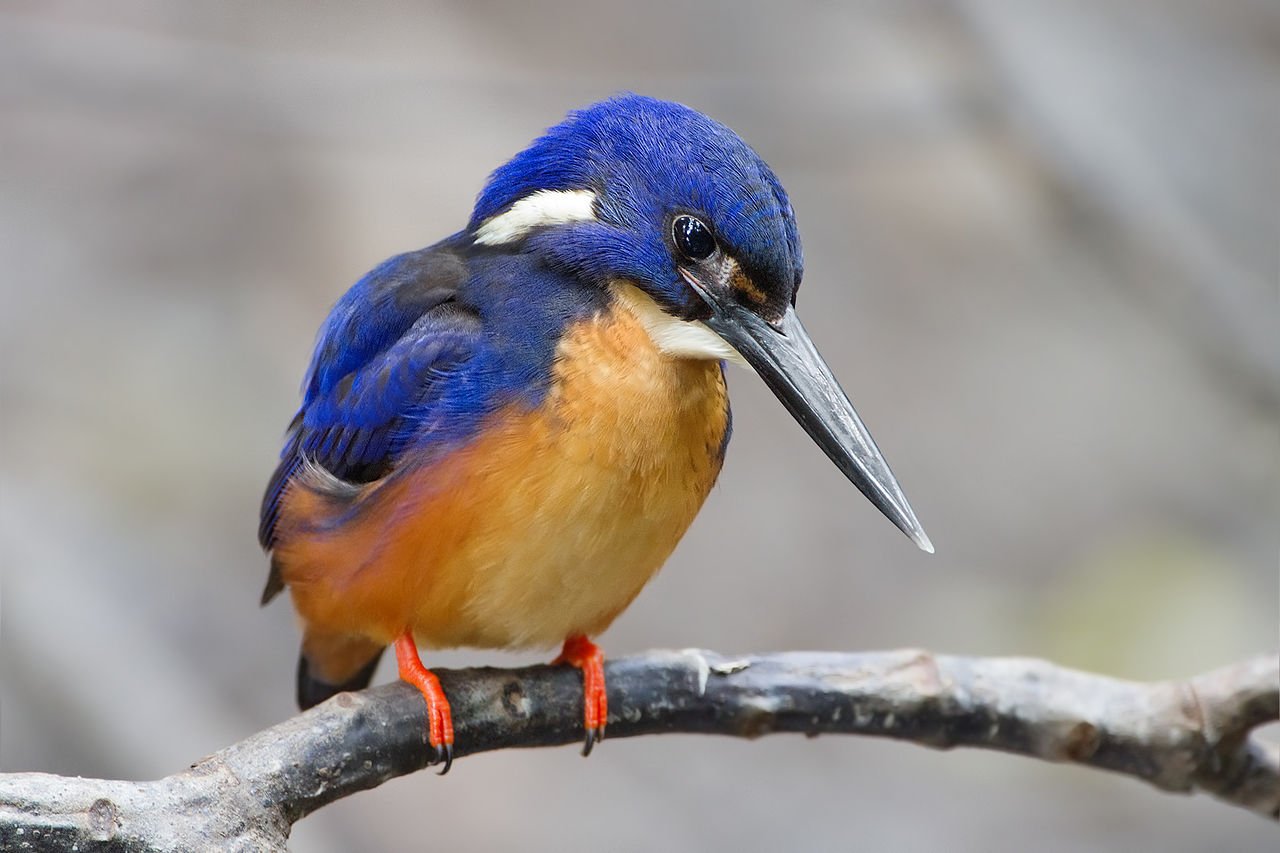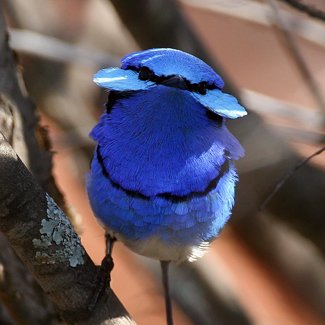Aussie blue beauties

OF ALL THE COLOURS in the world, blue is one of the most unlikely pigments to appear on the feathers, fur, scales, skin, and exoskeletons of the creatures around us. In fact, unlike the browns and greys that are easy to produce, and even the bright yellows, pinks, and reds that birds in particular can bring out through the foods they eat, blue is an impossible option for almost everybody.
While blue is fascinating on the creatures that exhibit this hue, the vast majority of animals are incapable of making it with pigments.
Even many of the creatures that you do see adorned in blue, such as the gorgeous Australian Ulysses butterfly (Papilio ulysses) and the bright blue neon cuckoo bee (Thyreus nitidulus) don’t actually produce the pigment either. They manage to produce it through trickery known as ‘structural colour.
Instead, these creatures have evolved a new kind of optical technology to create this colour. So instead of lining their external structures with blue-coloured cells, these butterflies, birds, and bees produce sheets of colourless cells that are structured in such a way to reflect light that appears blue to onlookers.
Ulysses butterfly Papilio ulysses
Named after the Ancient Greek hero Ulysses (Odysseus), who had an epic journey home after the battle of Troy, the caterpillars of these butterflies feed on the new foliage of rainforest trees. Males are particularly attracted to blue objects, spying them up to 30 m away.

Ulysses butterfly, Papilio ulysses. (Image Credit: Shuttershock)
Neon cuckoo bee Thyreus nitidulus
The neon cuckoo bee is just stunning, with its metallic blue sheen and slick, black wings. Its scientific name means ‘a little shiny’ in Latin. But don’t be fooled – this species has no problem doing some pretty disgusting things to get ahead in life.

Neon blue cuckoo bee, Thyreus nitidulus. (Image Credit: James Dorey)
Azure Kingfishers Ceyx azureus
Cloaked in stunning green, blue, turquoise and orange plumage, some kingfishers were once in danger of being hunted to extinction for their feathers. Despite their elaborate garb, these stocky birds are tough, and hunt by darting upon prey in a flash of colour from branches above the river or forest floor.

Azure kingfisher, Ceyx azureus. (Image Credit: JJ Harrison)
Blue-banded bee Amegilla cingulate
Named for the beautiful turquoise bands that run across its abdomen, the blue-banded bee sports a lush golden and white fluff, enormous green eyes, and tan-coloured wings that look like crisp layers of cellophane.

Blue-banded bee, Amegilla cingulate. (Image Credit: flickr/fish fidler)
Male superb blue fairy-wren Malurus cyaneus
The male superb fairy-wren is brightly coloured in order to attract females of the species to mate. The females are known as ‘jenny wrens’ and are brown in colour. Male fairy-wrens are also brown before they attain their breeding plumage.

Blue fairy-wren, Malurus Cyaneus. (Image Credit: Wikimedia)
The blue-winged kookaburra Dacelo leachii
The blue-winged kookaburra begins its day with a laugh that ends up more like a choking cough, as if it suddenly forgot the joke. It is the main kookaburra in northern Australia, and New Guinea has it also.The blue-winged kookaburra has much brighter colouration than its siblings.

The blue-winged kookaburra, Dacelo leachii. (Image Credit: Wikicommons)
Blue spiny crayfish Euastacus fleckeri
The endangered blue spiny crayfish is endemic to Mount Lewis in the wet tropics of Queensland. It’s bright exoskeleton isn’t hard to miss, nor is its siblings, the red spiny crayfish.

Blue spiny crayfish, Euastacus fleckeri. (Image Credit: Ryan Francis)
READ MORE:




